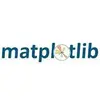
SciPy
SciPy is an open-source Python library that you can use for technical and scientific computing. The program is integrated with modules like linear algebra, interpolation, integration, derivative, image processing, special functions, ODE processing, signal, FFT, and other tasks used in engineering and science. SciPy uses a multi-dimensional array data structure that is provided by NumPy. The array includes Fourier Transformation, random number generation, and linear algebra but is not as generalized as SciPy.
You can use the software with a multi-dimensional data container which allows you to seamlessly integrate a wide variety of databases. Another module is Matplotlib, a mature plotting package that provides high-quality 2D plotting and 3D rudimentary plotting. Other data computing modules are NetworkX for analyzing complex networks, scikit-image for image signal processing, scikit-learn for machine learning, and PyTables for accessing data stored in HDF5 format.
SciPy Alternatives
#1 Pandas
Pandas is a library written for the Python programming language, used for data manipulation and analysis. The program lets you customize data structures and operations for changing numerical tables. It features a fast and efficient integrated indexing and Data Frame object for data customization. Pandas are equipped with tools like in-memory reding and writing with different formats like MS Excel, CSV, text files, SQL databases, and HDF5 format.
A notable feature is the handling of missing data that gain automatic label-based data alignment in computations and easily customize unorganized data into an orderly form. You can reshape and pivot large data sets. However, large data sets could be sliced, indexed, and being subset with intelligent labeling.
Other features are making or deleting columns from data structures and transforming or aggregating data by a grouping engine that allowing split-apply-combine operation on data. You can also merge and join the data sets, index with hierarchical axis, create domain-specific time offsets with time-series functionality, and use academic & commercial domains with Pandas.
#2 Seaborn
Seaborn is a Python data visualization library that uses Matplotlib to make statistical graphics. It helps you understand and explore your data. The plotting functions are based on arrays and data frames that contain complete datasets. You can internally perform the required statistical aggregation and sematic mapping to make an informative plot. The declarative UI and dataset-oriented API allow you to focus on drawn elements rather than worrying about how to draw them. The tool has specialized support for using categorical variables that shows observation or aggregate stats.
You have the option for visualizing bivariate and univariate distributions to make a comparison between data subsets. The UI has a convenient view of the complex dataset structures. Other features are High-level abstraction for multi-plot grids, concise control over figure styling, built-in themes, tools for color palettes, and pattern reveals in your data.
#3 Matplotlib
Matplotlib is a comprehensive library that used for the Python programming language and provides an object-oriented API for embedding plots via using a general-purpose GUI toolkit into the applications. The software is facilitating developers with the creation of static animated, and interactive visualizations in Python. Metplotlib is making things easier and hard things possible for you with nimble tools that permit a broad range of functions to you.
The software allows you to develop publication-quality plots with the few lines of code, and you have the full customization option for your line styles, font properties, and axes properties. The platform is offering you higher level plotting interfaces with various third-party packages. Metplotlib’s in-depth documentation is dispensing adequate information that allows you to get through the primary usage of the program and is a cost-effective solution that saves time when it comes to coding a program.
#4 Scikit-learn
Scikit-learn is a dedicated platform that gives machine learning library and protocol for the Python programming language. It consists of multiple features that give you a variety of classification regression and cluster algorithms that also provide vector machine support and give you random forest or various scientific modulus that comes within the software.
It has an excellent interface and provides easy integration of multiple languages besides Python. It uses high-performance linear algebra and array operations for integrating and making various apps in the program. It also gives you modules that comes with classification and regression clustering that provides you an automated grouping of various aspect, and other options.
Scikit-learn also gives your dimensionality reduction, model selection, preprocessing units, and various other features. It has an excellent interface, and the GUI module works in the best way to provide a guided structure for easy navigation. It comes with multiple library content that offers efficient tools that provide statistical modeling. The program is free for every user but provides a purchase module for professional developers.
#5 Anaconda
Anaconda is a popular data science platform that brings all data scientists, practitioners, and other people for human sense-making out of the data. The platform is some serious technology that is designed for data scientists for real data science and machine learning applications. It helps the businesses to stay up-to-date and keep pace with the advancements in their sector.
The individual edition of Anaconda is for solo practitioners that enable the users to equip them with thousands of open-source packages and libraries. The platform allows the users to build, install, and manage software in the cross-platform manger, and its cloud repository provides over 7500 data science packages.
Anaconda enables businesses to keep their data science teams to stay on the same page as the rest of the organization, and users can use this to distribute packages across channels to simplify workflows. Lastly, it provides enterprise-level security and keeps the data protected.
#6 MATLAB
MATLAB is one of the most popular programs that offer numerical computing, and users can draw models and use complex math formulas. This tool is handy and convenient for engineers. MATLAB is capable of creating data analysis and visualization, craft algorithms, and work with matrices, vector, and more.
MATLAB is a multi-paradigm numerical computing setting and fourth-generation programming language. It comes with the aimed to deliver initially at statistical computing, including an optional toolbox uses the MuPAD symbolic engine, letting access to symbolic computing competencies.
MATLAB turns up with structure data forms and supports dynamic field names and goes to aid components of lambda calculus by introducing function handles, or function references, which are implemented either in m files or nested anonymous functions. It is one of the best mathematical programs for performing math graphics programming, scaling, and deploying professional work in a more systemized way.
MATLAB is developed for all those professional engineers, scientists, and mathematicians who are required to deal with a broad set of data. With the assistance of this program, you can efficiently operate your analyses on more extensive data sets and scale up to clusters and clouds.
The exceptional quality of MATLAB is about its coding that can be integrated with other languages making it possible for you to deploy applications and algorithms functions on the web, enterprise, and production system.
#7 TensorFlow
TensorFlow is an end-to-end and open-source Library for dataflow and differentiable programming across a range of tasks that pave the way for the practical machine learning for everyone. The software is using a neural network for the machine learning process, and the excellent documentation set for productive environments. TensorFlow is surfacing all the agile tools that making way for secure deployments. The open-source library enables you to develop and train ML models, and you can get started via the quickly running off the Colab notebook right in your browser.
The software is dynamic in terms of providing a comprehensive and flexible ecosystem of tools, Libraries, and community resources that lets developers build and deploy robustly. The multiple features offered By TensorFlow are easy to model building via using intuitive high-level APIs, nimble ML production anywhere with the deployment of models in the cloud, flexible architecture for robust experimentation, and solution to multiple ML problems with step-by-step workflow.












